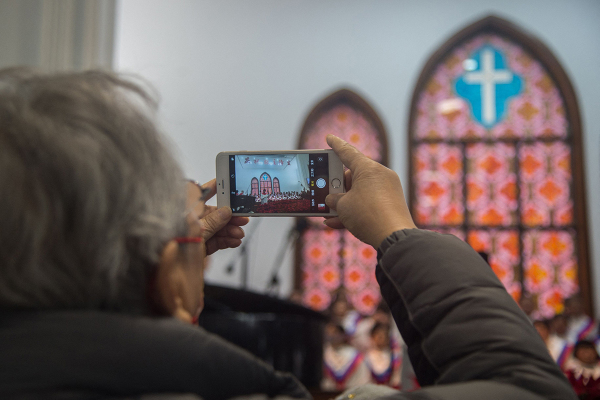A Jesus Response to the Race Problem & Ferguson
The Race Card of the Early Christians – What They Can Teach Us Today
The Zimmerman trial and the tragedy that surrounds it has captured the world's attention. Including that of the body of Christ.
Media coverage has heightened passions on both ends. Conversations about race, law, injustice, prejudice, guns, etc. are all being argued and inflamed.
In this article, we don't want to weigh in on the public debate. Instead, our passion is to encourage God's people everywhere to transcend the debate that the world is holding on its own terms by seeing ethnicity through the eyes of our Lord. There is only one race, the human race, which is comprised of different ethnic groups (Acts 17:26).
We want you, dear Christian, to take your cue from the New Testament believers, for they can teach us a great deal about this subject.
A Walk Into the First-Century Church
The world of the first-century was littered with racism and oppression. In the mind of a first-century Jew, Gentiles (Africans, Romans, Greeks, Syrians, Asians, etc.) were created to fuel the fires of hell.
When a Jew called a Gentile "uncircumcised," he spit it. It was a name of profound contempt.
If a Jewish person married a Gentile, the Jewish parents held a funeral service for their child. In their eyes, their child was dead.
On the flip side, Gentiles regarded Jews to be sub-human. Historically, the Jews have been an oppressed people, living under the thumb of one Gentile nation after another (e.g., Egypt, Assyria, Babylon, Greece, Rome).
In all of human history, there has never been so much animosity, hatred, and violence between two groups of people as there has been between the Jew and the Gentile.
But alas, in the first-century, there emerged a group of people on the planet who transcended this racial hostility.
Here was a group of people who saw themselves as members of the same family . . . a people made up of Jews, Gentles, slaves, free, rich, poor, male and female.
These were the early Christians. The Roman world stood in awe as they saw a people who hated each other began to love one another and do life together in the Name of Jesus.
Watch them walking into the market place together, arm and arm, singing with joy in their hearts.
Jew and Gentile.
Slave and free.
Rich and poor.
Male and female.
Look at them closely. Jew and Gentile eating together, working together, greeting one another with a holy kiss, raising their children together, taking care of one another, marrying one another, and burying one another.
This fact blew the circuitry of every person living in Century One. It shook the Roman Empire to its very foundations.
The church of Jesus Christ was a classless society. It's members didn't regard social status, color, or position. For them, there was no Jew or Greek in the body of Christ. There was no slave or free. There was no rich or poor.
Here there is no Greek or Jew, circumcised or uncircumcised, barbarian, Scythian, slave or free, but Christ is all, and is in all. Colossians 3:11
For the first two hundred years, the Christians only addressed each other by their first names. The reason? Because their last names indicated their social position in society.
Here was a classless, raceless society where all social distinctions were erased.
To their minds, Jew and Gentile, slave and free, rich and poor no longer existed. The early believers saw themselves as part of the same family . They were a new race . . . a colony from another realm, not of or from this earth. Yet for this earth.
How Did This Happen?
Enter Jesus, a prophet from the ill-starred town of Nazareth.
In His humanity, Jesus was Jewish.
But take another look. He was something other . . .
"I am not of this world."
"The Father sent me."
"I came from the Father and I will return to Him."
To borrow the language of Arthur Custance, Jesus Christ was a new species on the planet, a new creation, a new kind of human.
Jesus of Nazareth was the first child ever to break open the womb of a woman who would be part of a new creation. A human being after God's original thought. A creature who lived by divine life, expressing God's image in the earth.
And He had a holy intention that was shrouded in a mystery for ages (Colossians 1:25-28; Ephesians 3:2-6).
What was that intention? It was to take over the planet by establishing a colony of His own species on the earth. And He would do it in a way unthinkable to humans and angels.
He would die, rise again, and reproduce Himself, becoming the head of a new race, a new humanity, a new creation.
Very truly I tell you, unless a kernel of wheat falls to the ground and dies, it remains only a single seed. But if it dies, it produces many seeds. John 12:24
In His death, Jesus took all social distinction, all racial tensions, all forms of human separation, and He crucified them.
But that's not all.
In His resurrection, He brought forth a new humanity out of Jew and Gentile, destroying the wall of division and hostility that separated them.
For he himself is our peace, who has made the two groups one and has destroyed the barrier, the dividing wall of hostility . . . His purpose was to create in himself one new humanity out of the two, thus making peace, and in one body to reconcile both of them to God through the cross, by which he put to death their hostility. Ephesians 2:14-16
Jesus Christ became the firstborn of a new creation (Romans 8:29).





















